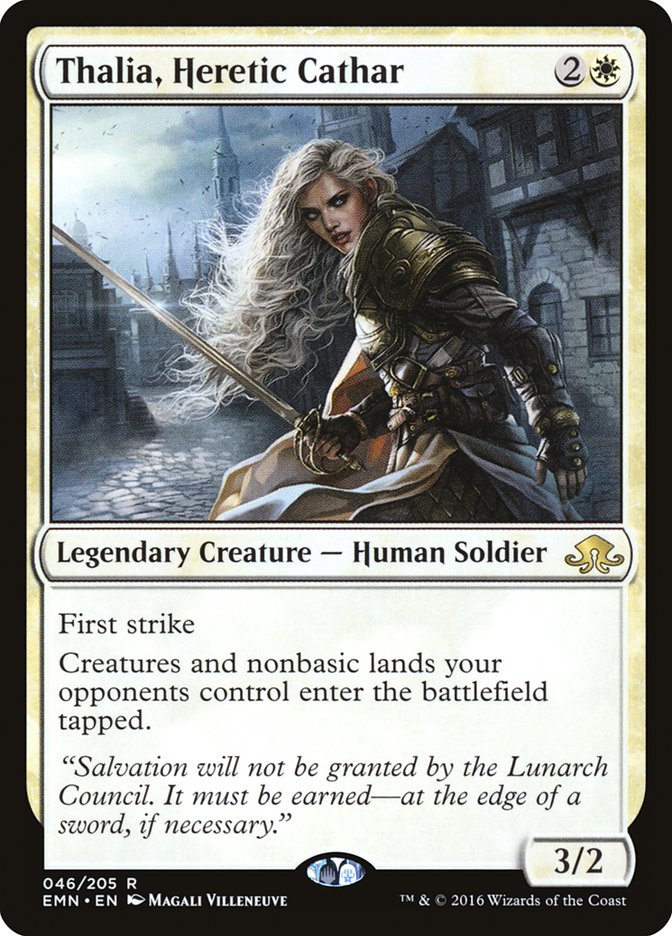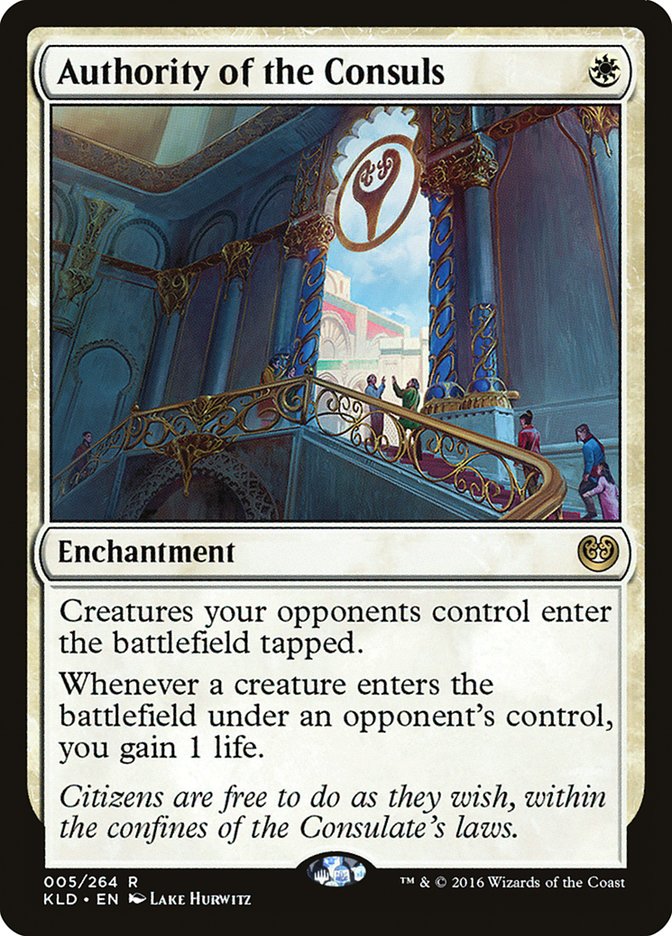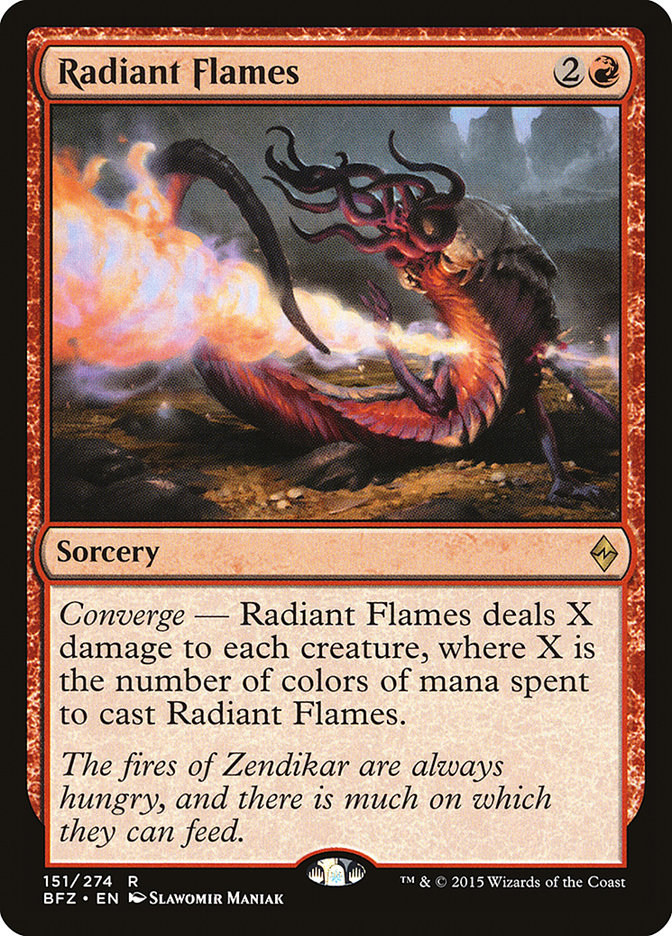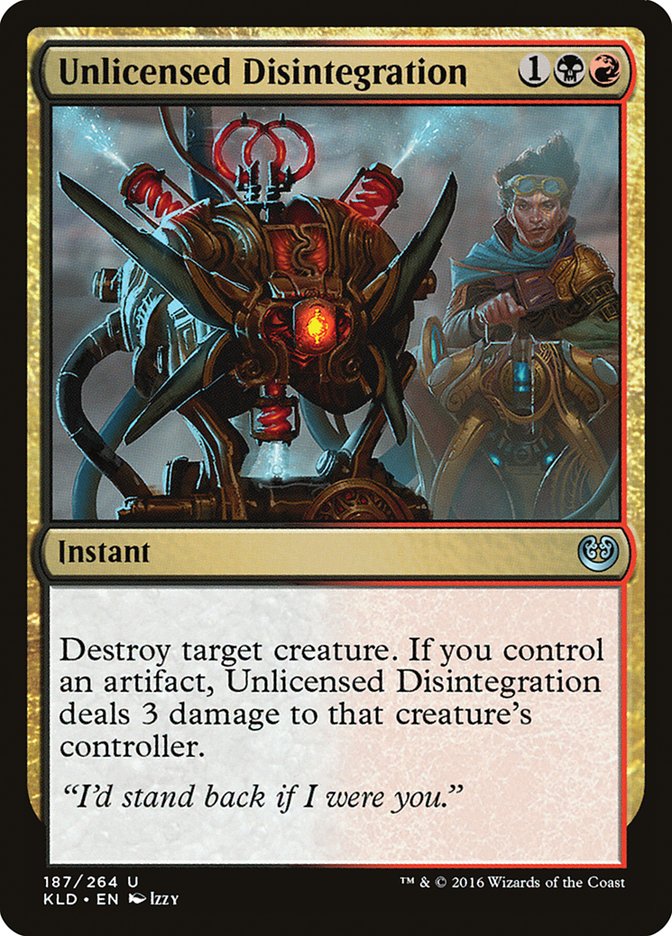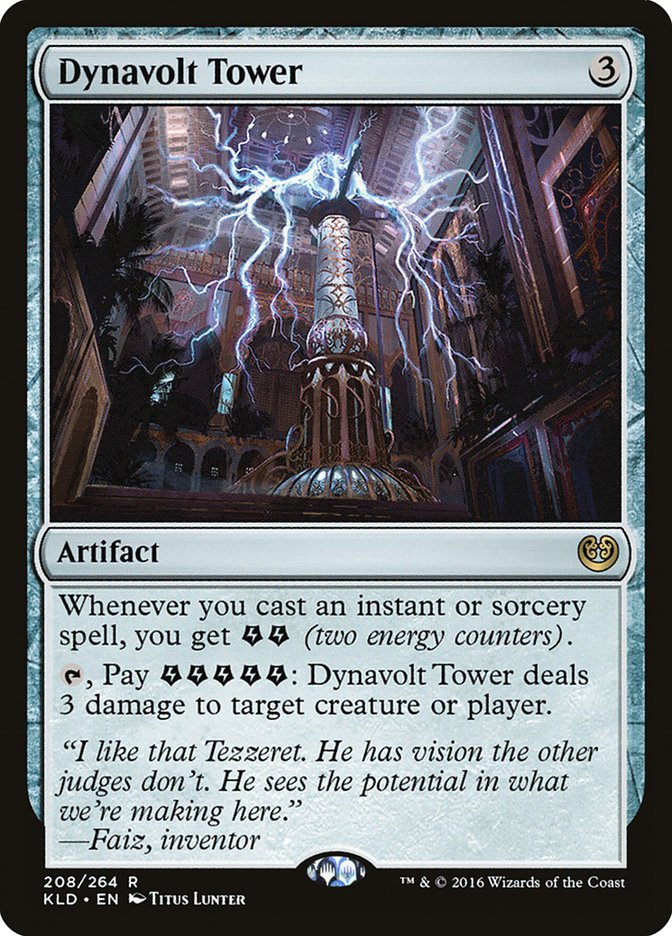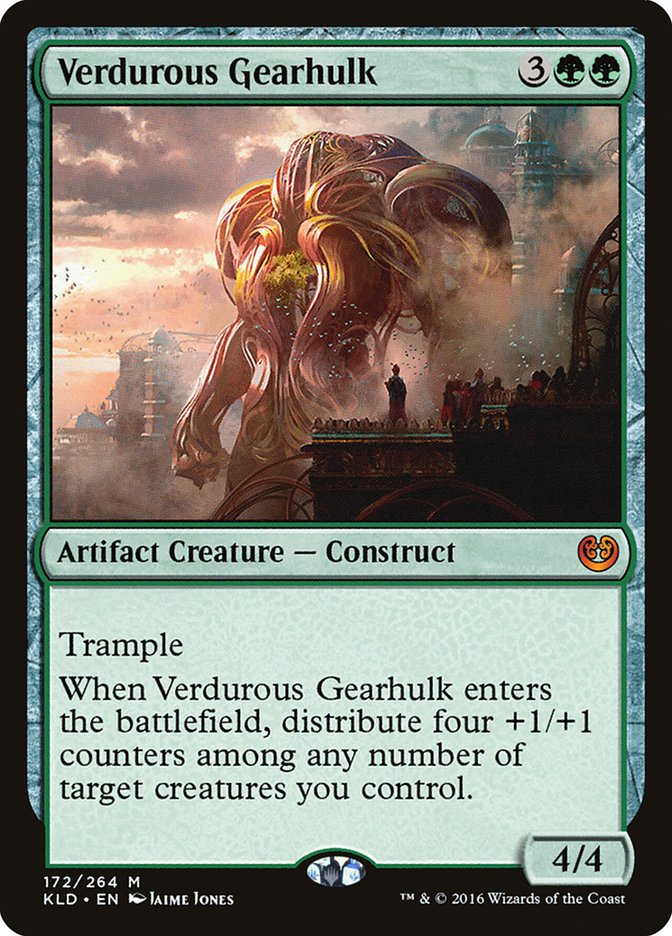Week One of Aether Revolt Standard is in the books and the early metagame seems quite clear. Five decks took a majority of the Top 64 spots in #SCGCOL: Four-Color Saheeli, Jeskai Saheeli, G/W Tokens, G/B Aggro, and Mardu Vehicles. All of these decks had at least six copies in the Top 64, headlined by the 25 copies between the Saheeli Rai combo decks.
Sometimes the first weekend can be a crapshoot, with the metagame too spread out to make a real judgement on which decks will survive the coming weeks and which will ascend into the top tiers, but this tournament looks much more definitive. Therefore, I wanted to take this week to look back on my metagame predictions for Columbus and see where I was right and where I was wrong.
Lastweek I gave three decks that I thought would be prevalent in the tournament. So let’s compare those decks against the best-performing decks from the weekend.
Deck One: Jeskai Saheeli
Creatures (7)
Planeswalkers (4)
Lands (26)
Spells (23)
- 3 Shock
- 2 Negate
- 3 Anticipate
- 1 Radiant Flames
- 2 Oath of Jace
- 4 Harnessed Lightning
- 2 Revolutionary Rebuff
- 3 Glimmer of Genius
- 3 Disallow
Sideboard

Ding ding ding! Off to a great start, although, to be fair, this one was fairly obvious given the amount of hype the deck had received during preview season. Jeskai Saheeli is a clearly powerful deck filled with proven cards and a great two-fold strategy. SCG Tour mainstays like Kevin Jones and Todd Stevens were piloting the deck, so it was also well-represented among the better players in the room, an advantage that often goes unreported.
Oddly, I’ve heard a lot of players lose confidence in this deck, preferring the combo in a different shell or a pure control deck with Torrential Gearhulk instead.
Such a sentiment is understandable, since mixing two decks can result in an outcome that has the weaknesses of both, but I don’t think that’s the case here. The threat of the combo will cause many opponents to play more conservatively, holding up mana for removal spells so they don’t risk losing the game on the spot, which plays into the hands of the control part of the deck.
Moreover, sideboarding against this deck is a nightmare. Cards like Grasp of Darkness; Authority of the Consuls; Thalia, Heretic Cathar; and Walking Ballista that answer the combo are poor against the rest of the deck but likely a necessary evil or the Jeskai Saheeli player can transition into a combo-centric game plan. On the other hand, if you hedge too far toward stopping the combo, they can simply sideboard down on combo pieces or remove it entirely as Modern Splinter Twin used to, leaving you with a pile of dead cards.
In all of these scenarios, it’s the Jeskai Saheeli side of the matchup that is dictating what the opponent is doing and reacting accordingly. That is the surest sign of a strategic advantage and it happens here as a matter of course, not in a few specific matchups. Everyone was aware of this deck going into the tournament and it was still one of the best decks in the room.
As the format is further refined, this deck will certainly get worse as players will become more accustomed to playing against the combo and at finding the right balance of answering it versus being prepared for the control gameplan. But that balance takes a while to find and this deck is great at punishing untuned lists, so for the time being, expect it to stay at the top.
Deck Two: W/R Humans
You win some. You lose some. As big of a hit as Jeskai Saheeli was, calling W/R Humans as the best aggro deck in the format over Mardu Vehicles was just as big of a miss. Mardu Vehicles took six of the Top 64 slots with one in the Top 8, a strong showing despite losing its best card in Smuggler’s Copter. Meanwhile, W/R Humans managed only a single Top 64 finish in the hands of Adam Yurchick.
Creatures (32)
- 4 Expedition Envoy
- 4 Thraben Inspector
- 4 Thalia's Lieutenant
- 4 Town Gossipmonger
- 3 Thalia, Heretic Cathar
- 3 Pia Nalaar
- 4 Inventor's Apprentice
- 4 Metallic Mimic
- 2 Kari Zev, Skyship Raider
Lands (21)
Spells (7)

Thanks for trying to make me look smart, Adam!
Now, I’m not surprised that Mardu Vehicles showed up, and I certainly expected it to be a more popular choice than W/R Humans, since it’s generally more powerful and gets to play one of the best cards from Aether Revolt in Heart of Kiran. But in my mind, Heart of Kiran didn’t fit that well into the deck, since the real prize is being able to crew it with planeswalkers and Mardu Vehicles doesn’t do that consistently.
But it appears that Heart of Kiran is powerful enough that that isn’t really a problem. The body is perfectly sized to attack opposing planeswalkers like Saheeli Rai; Nissa, Voice of Zendikar; and Gideon, Ally of Zendikar, and Mardu Vehicles has plenty of creatures capable of crewing it.
Once you accept Heart of Kiran as a suitable replacement for Smuggler’s Copter, Mardu Vehicles looks to be only slightly behind W/R Humans in terms of speed but well ahead in terms of power and diversity of its threats.
Threat diversity in particular has become crucial for aggressive decks in recent years. There are powerful answers to any given type of threat, Radiant Flames and Kozilek’s Return for small creatures, Unlicensed Disintegration and Stasis Snare for larger ones, Fragmentize and Natural State for Vehicles, and so on, but all the removal is narrow in that it only handles a certain class of threat. If you diversify your threat base, you force your opponent to similarly diversify their answer suite and have the right answers at the right time.
Having the right answers to a pile of small creatures is easy if you come with a prepared list. Having the answers to a couple of small creatures, a Scrapheap Scrounger, a Vehicle, and a Gideon, Ally of Zendikar is very difficult, no matter what you do.
That doesn’t mean that W/R Humans is bad, just that it needs to have a vulnerable metagame to attack. Mardu Vehicles is much more suited to competing week after week through various metagame cycles, since it is less vulnerable to hate cards. If the metagame slows down and we see a decrease in sweepers, then W/R Humans is going to be a great choice, but you have to pick your spot.
Deck Three: U/R Dynavolt Tower
The specific list I advocated didn’t show up, but Ray Perez lost his win-and-in for the Top 8 with a controlling version of the deck:
Creatures (4)
Planeswalkers (1)
Lands (26)
Spells (29)

I knew that this deck wouldn’t be popular enough to put up great numbers and I’m happy to see a quality player show up with the deck and put up a solid finish. Ray’s more controlling list certainly matches up better against the various midrange and midrange aggressive decks that showed up, namely G/W Tokens and G/B Aggro, so it’s no surprise to see this version succeed over the one I posted. I’m generously calling this one a wash.
Between the counterspells, creature removal, and a permanent answer in Dynavolt Tower, this deck is well-positioned to answer any Saheeli Rai combo deck while also having the tools to compete in fair matchups. The red removal can leave you weak to a resolved planeswalker or large creature, but your cheap counterspells are great there, so, as is always the case with control, it’s about carefully using your answers in the right order to cover the most dangerous threats possible.
Surprisingly, Torrential Gearhulk Control decks did not show up in the Top 64 in great numbers. Excluding those with the Saheeli combo, there were only four combined copies in the money when I would’ve expected twice that number. Of course this is just one tournament and it’s the first tournament of a new format, where reactive decks are historically underrepresented, but I think the failure of those decks to show up explains a lot of what we saw last weekend.
Notably, G/B Aggro and G/W Tokens had struggled against control in my testing because they simply weren’t able to get onto the battlefield quickly enough, allowing the control deck to trade their counterspells up the curve before pulling ahead with card draw and Torrential Gearhulks. Now G/W Tokens has the ability to overwhelm a control deck with planeswalkers, should they get one to stick, and Verdurous Gearhulk is importantly immune to Revolutionary Rebuff, but in general, instant-speed removal and counterspells are going to match up well against decks that are starting their curve on two or three.
With the control decks out of the picture, G/B Aggro and G/W Tokens were able to flourish more than I expected, and those decks were able to suppress aggressive decks like Humans that can’t effectively pressure planeswalkers and are vulnerable to Walking Ballista and the sideboard sweepers those decks can and did play.
The lack of pure control decks also allowed the Saheeli decks to be even more prevalent than I expected, taking 25 of the Top 64 slots. More decks with expensive sorceries means more decks tapping out in the mid-game, leaving windows open to execute the combo. Knowing this, players went to some pretty extreme lengths to insulate themselves from being run over by Cats, even maindecking copies of Authority of the Consuls. Either such measures weren’t undertaken by most of the field, or this combo succeeded in spite of it and is better than anyone thought.
Looking Forward
This weekend is #SCGRICH and then #PTAER follows, so Standard is bound to change in the coming weeks. But for these tournaments, there is a clear top tier of decks to aim for. As with the last Pro Tour, I would expect Torrential Gearhulk control decks to come out in greater numbers, as players now have a defined metagame to attack with a well-tuned list.
Such a control deck should match up quite well against the midrange- and combo-dominated format we saw last weekend. The question is which of those decks has the tools to succeed once the format slows down.
Of the combo decks, I side with Tyler Hill’s Four-Color Saheeli list:
Creatures (12)
Planeswalkers (9)
Lands (22)
Spells (17)

Rather than falling back on a diluted control plan that is simply a weaker version of the control deck you’re playing against, it becomes a planeswalker-heavy midrange deck with the cheap counterspells necessary to force through its critical threats. Having the counters to force through your threats gives this plan an advantage over something like G/W Tokens, even though you lack the aggressive power that deck has.
An influx of pure control decks will also punish players who hedge too far toward stopping the combo. Having cards like Authority of the Consuls in your maindeck is embarrassing against control decks and the better permanent answers. Thalia, Heretic Cathar and Walking Ballista aren’t much better. Combined with weak removal spells, these decks likely won’t have enough sideboard space to remove all their bad cards, leaving them at a disadvantage through the entire match.
For players sticking with aggressive or midrange strategies, finding the right balance between preparing for combo and preparing for control will be the key for success over the next two weeks. Will combo decks continue to show up in large numbers this week? Or will the fear of increased hate keep them at bay? If the latter, you can gain an edge by cutting down on your own hate and letting the rest of the field beat them for you.
That question is going to be ubiquitous in this Standard season, even once the metagame stabilizes after the Pro Tour, so be sure to follow the upcoming results closely and be mindful of the patterns that emerge, as they are likely to repeat themselves later on.



